Have questions?
Get answers.


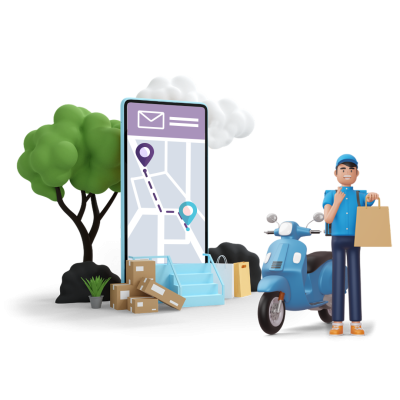

Warehouse

System

Route

Delivery

Final Mile
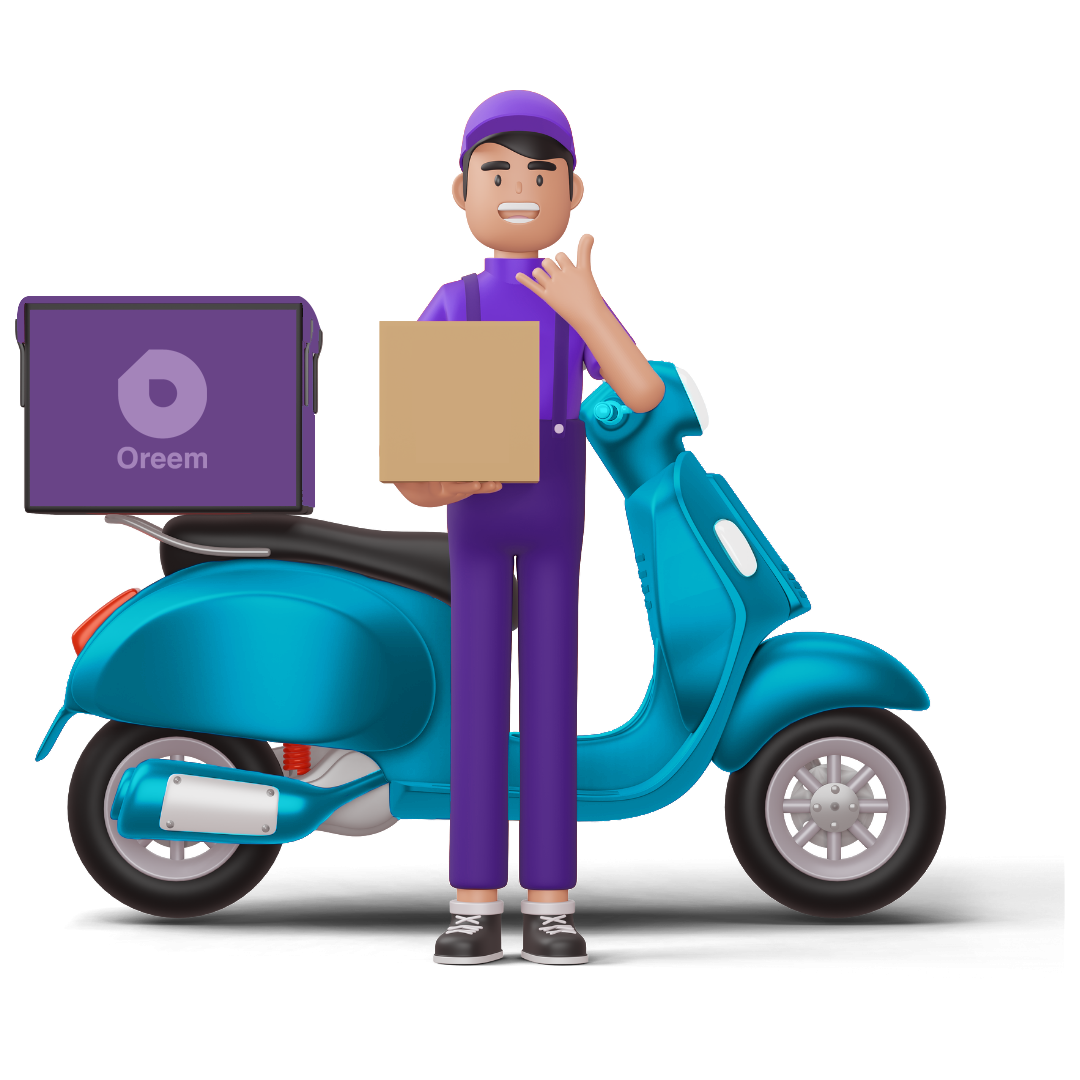
Get Your Parcel Deliver!
We provide the fastest courier delivery service & parcel delivery in Bahrain and all over the world.
What is last mile delivery?
It is the transportation of products or parcels from distribution (warehouse shelf) hub to the final delivery destination (the door of the customer). The last mile delivery logistics goal is to deliver packages as quickly, affordably and accurately as possible. A lot of the retailers are considering last mile delivery as main differentiator.
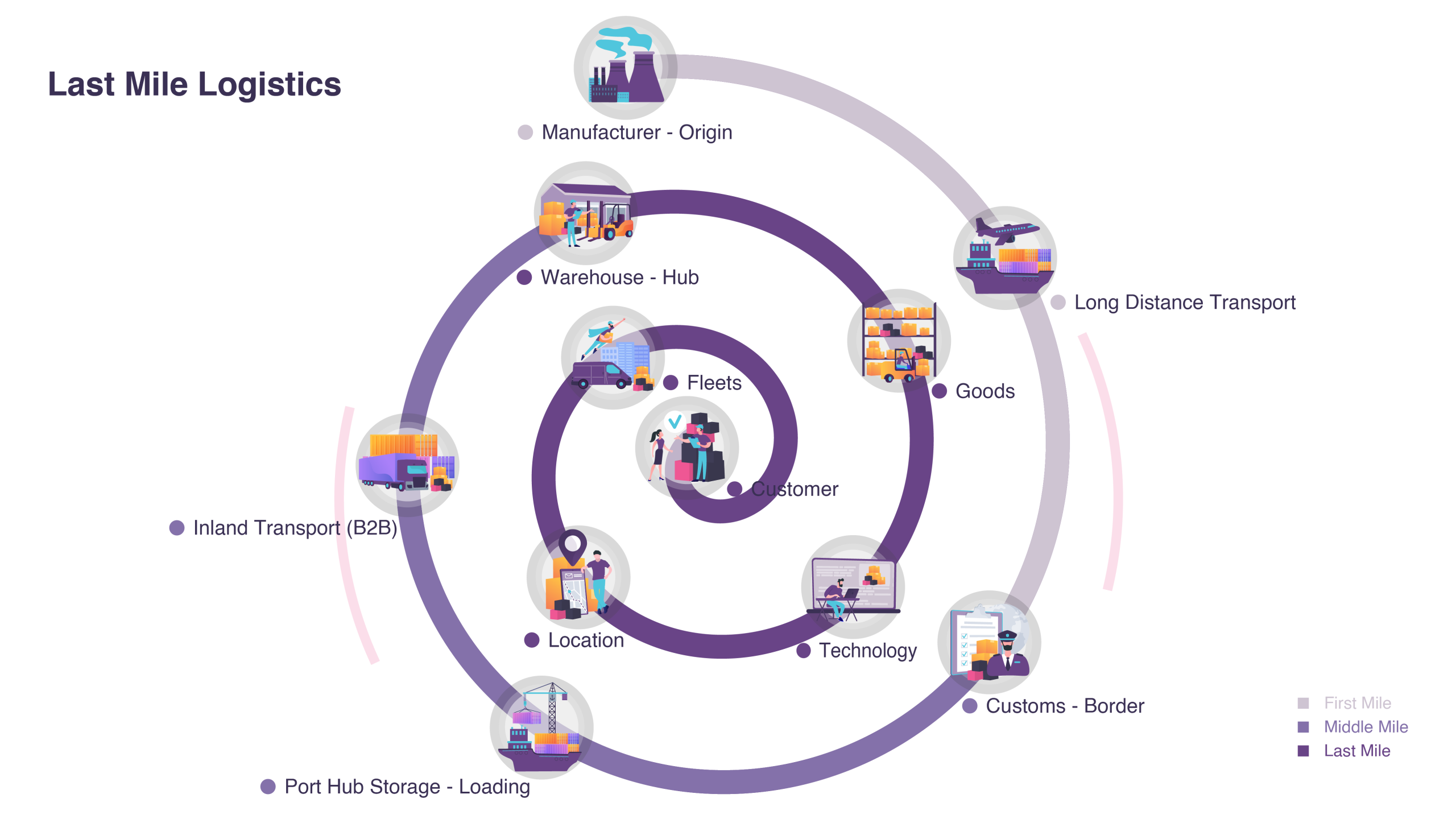
The first mile is the process of getting an item by the manufacturer.
Middle mile is a long-distance transport method that involves customs clearance ports, hub storage and loading, as well as in-inland transport. (For international orders none the steps listed above are needed.) The product is delivered to the final location before being loaded onto trucks to be shipped out.
The last mile also referred to as final mile, is the place where the item is delivered from a local facility or warehouse to be delivered for its delivery to the client.
How does last mile delivery works?
Each step of the supply chain process is important however, the final mile is where the biggest impact can be created for customers’ experience. If a product is delivered damaged or late or never arrives in a timely manner specially for pharmaceuticals deliveries, there’s a high possibility that the customer is likely to shop elsewhere next time. In essence, the this is where the company carries their values, their image and their commitment to the door of the customer.
When the supplier or client receives order, our system will offer a wide range of options to choose the one that fits your needs. At the scheduled time, we will collect the order, transport it to the warehouse (hub), and from there to its final destination.
The next step is assigning the driver, vehicle and planning the delivery route. Before loading and dispatching, all of the goods will be double scanned to prevent and avoid any mistakes and update the shipment status.
Lastly, when the shipment reaches its final destination. The client signature is needed to update the system as proof of safe and successful delivery.
If the package is instant it will go directly to the customer but when they choose next day delivery the goods might go to the hub, where they will be scanned and register into our system until the order is ready for the final destination.
Once your shipment is out, the client will be provided with a live tracking. He can track shipment location, and the driver’s contact details from the hub to the final destination.
Last mile delivery tracking app and automatic
customer notifications.
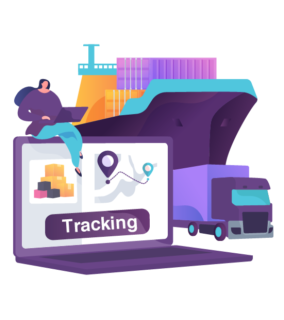
Oreem app uses GPS-tracking to keep track of the live location of drivers and packages with automated notifications with the real location of their delivery driver at that moment. This will eliminate customer service call about parcel location. Oreem app also ensures the driver will travel to the right addresses, at the right time, following the shortest route.
What is last mile delivery problem?
Last mile problem is while customers want delivery to be fast and free, but it is also the most costly and time-consuming component of the supply chain, accounting for up to 53% total shipping costs. Deliveries become more expensive when there is inefficiency.
The main problem with last mile delivery is the dropping of small packages to multiple stops in the same area to unique destination, which means drivers take more idle time, complex route and at the end more time on the road.
If you ever looked at a real time tracking online you can see that the driver is taking forever to reach your destination because drivers sometimes have to go through bad roads, find the location of different people, and contact them for

Transparency
The customers or buyers always want to know the location of their shipment and the approximate time of delivery. Therefore, exposure is the most substantial prerequisite to establish reliability. The majority of businesses offer track IDs of the plan that display the shipment standing of the product. Yet in a technology driven world, people aren’t pleased with monitoring codes. They wish to examine every step of the last mile procedure even if the distribution gets on the same day.
High Delivery Charge
Retailers and logistic companies face a difficult task in providing a great experience for customers while still being profitable. 28% of all delivery costs come from the last mile. The main reason is the lack of infrastructure to deliver products on time. Additionally, failed delivery attempts and long routes, driver salaries, fleet operations, and other factors all have a significant impact on the delivery cost.
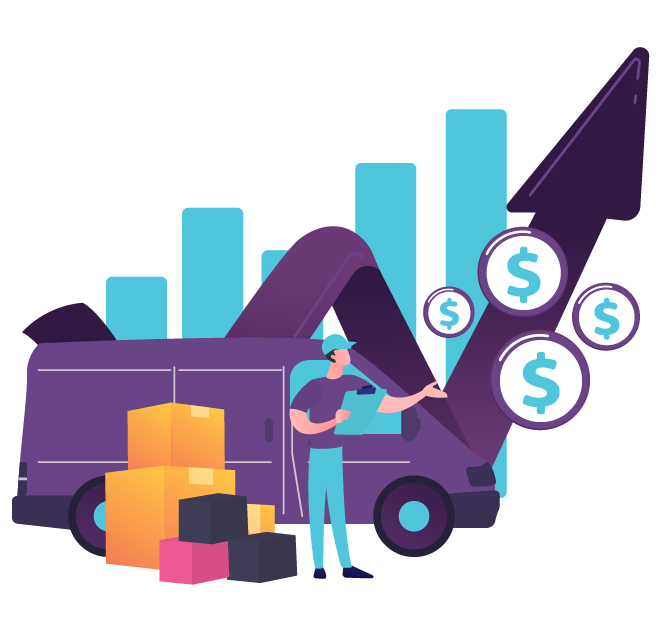
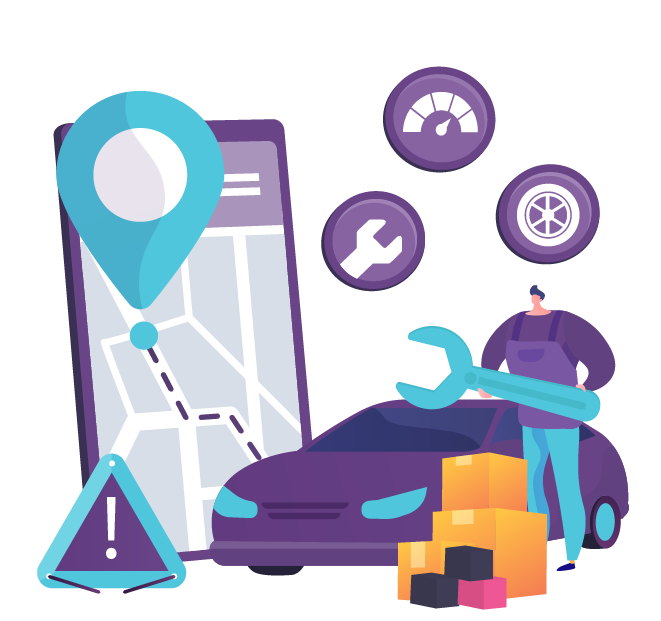
Out of control Elements
Last mile delivery is something we cannot predict. Last mile issues such as traffic, weather, and flat tires are all beyond our control. logistics companies cannot do seamless communications or create a plan B for delivering products quickly.
Poor Planning
Route planning can be really confusing and draining for beginners. It all relies upon factors such as fuel effectiveness and environmental regulations. Late deliveries are usually caused by inefficient route planning. Logistic companies can use route optimization tool to overcome this obstacle.

Last Mile Delivery FAQ
Some answers about the most common questions regarding last-mile delivery and related topics.

Have questions?
Get answers.
Which industries deal with logistics last mile?
Last mile logistics is a crucial part of any industry that sells products directly to consumers. This includes food delivery and e-commerce retailers.
Other relevant industries
What is the place for last mile delivery in the order process?
The last logistics step in an order is called the “last mile delivery”. This happens after products are received, sorted, picked and packed, and then shipped to the distribution centers.
Last-mile delivery involves shipping products directly from delivery hubs to the customer’s doorstep.
What are the Last mile delivery challenges?
The main challenge is drivers have to carry a large amount of packages, and each package with unique destination, which means more stops, more complex routes and more time on the road. In order to maintain the quality of the delivery serves, a large fleet of delivery vehicles and drivers to ship a small number of products.
What are the Stages?
Traditional last-mile delivery consists of five steps
What Is Last Mile Logistics Provider?
Businesses that provide last mile logistics services are those who offer local or regional delivery. Last mile logistic providers are also known by the name last mile carriers. These last mile logistics providers are examples of:
What is an example of last mile delivery?
Last mile carriers usually have a fleet that delivers the product(s). Oreem is an example of a last mile carrier. They have increased their delivery speed and customer satisfaction to improve their last-mile efforts.
Last mile delivery market
The last mile delivery market is set to grow by USD 146.96 billion from 2021 to 2025, progressing at a compound annual growth rate (CAGR) of 15.06% as per the latest market report.
Speak to Oreem
Have questions?
Get answers.
I need help with my package
Where’s my package?
You can track your package easily through the WhatsApp message you received from Oreem.
If you haven’t received a tracking link yet, it means your shipment is still being prepared by the merchant. Once it’s ready for dispatch, you’ll automatically receive a WhatsApp notification with real-time tracking updates.
How can I cancel my shipment?
To cancel your shipment, please send an email to support@oreem.com
with your order reference number and the reason for cancellation, so our Bahrain support team can process your request quickly.
How can I update my address?
You can update your address on the tracking link we’ve sent you through the WhatsApp message you received.
I have some feedback!
We’d love to hear your feedback, whether it’s good or bad. It helps us improve big time. Please drop us an email at support@oreem.com
overview
What is Oreem?
Oreem is an e-commerce enabler that can help you create a seamless post-purchase experience for your customers with safe & secure fulfillment and super-fast last-mile delivery options
How does it work?
Register to one of the Oreem subscription plans, plug in an order and let Oreem fulfill & deliver or just deliver your products to your customers across the Bahrain and the world.
How do I know if Oreem is right for me?
If you’re a business owner that wants to create a better post-purchase experience for your customers with easy integration to your shopfront, warehousing & fulfillment, fast delivery and a headache-free experience, then Oreem is right for you.
How do I sign up to Oreem?
Click here to check out the different plans we have, subscribe and start your journey in a few minutes.
delivery
What delivery options do you offer?
With Oreem, you can reach the whole world. We offer same day, next day, and 2–4 hour delivery options within Manama and other major areas in Bahrain. We also offer express international delivery to anywhere in the world.
What types of vehicles does the Oreem fleet use?
Our fleet includes motorbikes, cars, and vans. Motorbikes reach destinations quickly, cars are ideal for temperature-sensitive items, and vans are used for bulkier packages. For international shipments, we only ship by air.
What are the delivery fees?
Our pricing is transparent, and we offer subscription plans suitable for all types of businesses. You can check the available plans here.
Does Oreem provide payment on delivery (COD)?
Yes. Oreem accepts various payment methods including cash or card on delivery, as well as payment links. All contactless payment options are accepted, including Apple Pay, Google Pay, and Samsung Pay.
What are the charges for payment on delivery (COD)?
Payment on delivery is charged at 2.8%–2.9% of the total transaction amount depending on the plan you choose. For example, if Oreem collects BHD 10 on your behalf, a fee of BHD 0.28 will be deducted before transferring the remaining balance to you.
What regions/areas does Oreem cover?
We currently cover all governorates in Bahrain, including Manama, Muharraq, Riffa, Isa Town, Hamad Town, Saar, Budaiya, Sitra, Hidd, and Amwaj Islands. There are a few remote areas we don’t cover yet check these here.
International coverage
Oreem ships from Bahrain to destinations around the world through express air delivery. Our international network ensures fast, reliable, and secure global shipping.
How can my customers track their shipment?
All customers receive a WhatsApp message with a tracking link where they can view live updates, update their address, make payments, or set delivery preferences.
Do you manage returns?
Yes. Returns are simple and can be requested in just a few clicks. Once a return is created, your customer will receive a notification with full details.
How are returns charged?
Returns are charged the same as deliveries — no extra fees apply. For example, if your delivery rate is BHD 1.5, the return will also cost BHD 1.5.
How can I contact customer support?
You can reach our support team through the chat box on your Oreem dashboard or through WhatsApp integration.
Are there any areas Oreem does not cover in Bahrain?
Yes, a few remote or restricted areas may not be serviceable. You can check the list here.
Is there a weight limit for my packages?
Our standard pricing applies to packages up to 5 kg and 20x20x20 cm in size. Additional charges apply for heavier or larger packages.
Can Oreem help me ship internationally?
Yes, you can ship anywhere in the world with Oreem. Placing international orders is as easy as local deliveries.
Does my customer have to be present for delivery? What if they are not home?
If it’s a prepaid order and the goods are not perishable, the customer can request the courier to leave it outside their door. If it’s a COD order, the customer can pay online via the Oreem tracking page before requesting the same option. Otherwise, we’ll arrange a convenient time for delivery.
Are there any prohibited items that Oreem can’t deliver?
All items prohibited under Bahrain law, hazardous materials, and products that your business is not licensed to sell.
What happens if my customer is not available when the courier arrives?
Our couriers will attempt delivery up to three times if needed. If the customer is unavailable or refuses the shipment, it will be safely returned to you.
fulfillment
How does fulfillment with Oreem work?
Super easy! You’ll integrate your shopfront (Shopify, WooCommerce, Magento) with Oreem. We will store your inventory in our Bahrain warehouse, and once you get an order, we’ll pick, pack, and ship it to your customer anywhere in Bahrain or internationally.
Why should I choose fulfillment with Oreem?
Imagine getting new order requests and not having to worry about a thing. You’ll just need to focus on getting more orders in while Oreem takes care of the storage, packing, and delivery.
Do you provide packaging?
Yes, we provide standard polybag packaging for fulfillment. If you need us to use your own custom packaging, we are happy to accommodate.
How quickly can you fulfill orders?
Any orders placed before 12 pm are delivered on the same day across Bahrain. Any shipments received after that are delivered the very next day. International orders work the same way, but delivery time varies between 3–5 days.
What temperature-controlled storage options does your warehouse provide?
Our warehouse in Bahrain is fully temperature controlled at 22–25°C. We also have cold rooms (2–6°C) and freezer rooms (–20°C) that are ideal for sensitive cosmetics and food items.
Where is the Oreem warehouse located and what are the working hours?
The main Oreem warehouse is located in Salmabad, Bahrain. Open daily from 9 am to 6 pm.
How can I track my inventory?
You’ll be able to keep track of your inventory at all times through the live database we share with you. It’s real-time, so you’ll always know what you have in stock. Our fulfillment team also takes regular stock counts, checks expiration dates, and notifies you once quantities are low.
Who can I contact in case of fulfillment related questions?
You can reach out to our customer support team through the chat box on your Oreem dashboard. We’ve integrated with WhatsApp as well, so that you can message us on the go.
Are there any prohibited items that Oreem can’t store and deliver?
All items prohibited under Bahrain law and any products that your business is not licensed to sell.
integration
How does integration help me?
When you integrate with Oreem, any new order you receive is transferred directly to the Oreem dashboard. That means you won’t have to plug in orders manually and avoid data input mistakes.
What integrations are available?
Oreem tech is API-based so it can connect to any API-based software. We have ready-made integrations with Shopify, WooCommerce and Magento that take only a few minutes to setup. You’ll be able to do it yourself without the need to hire any extra developers and it’s completely free.
Is it possible to create custom integrations?
Custom integrations are possible, depending on the complexity of the integration, additional charges may apply.